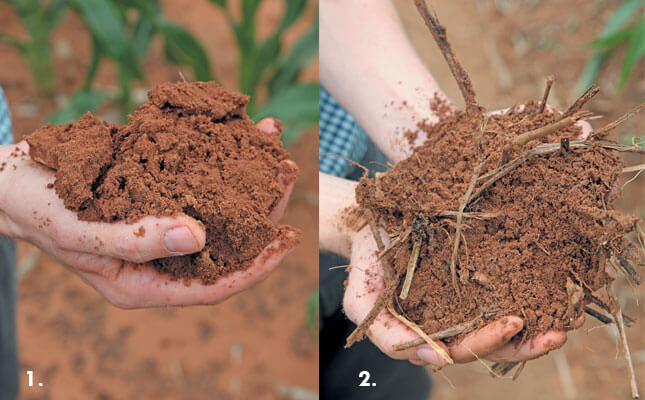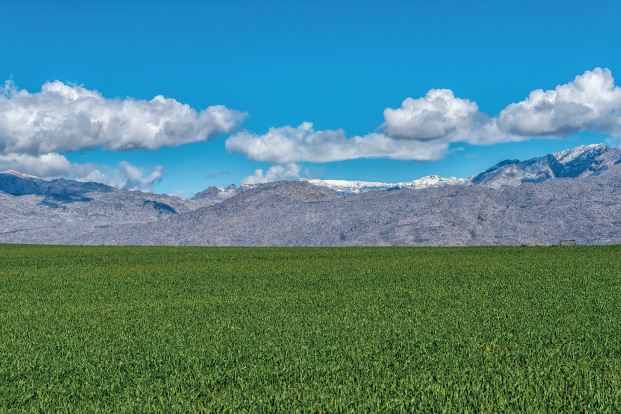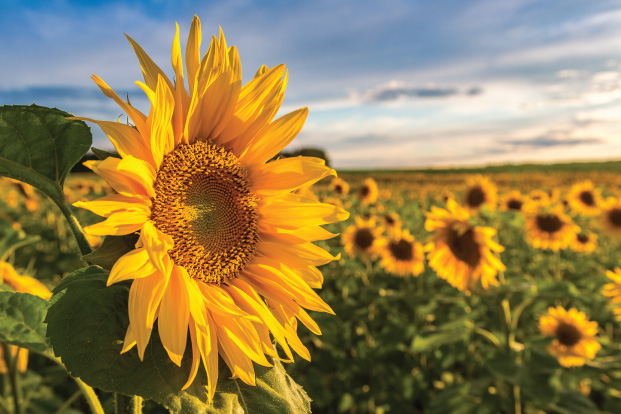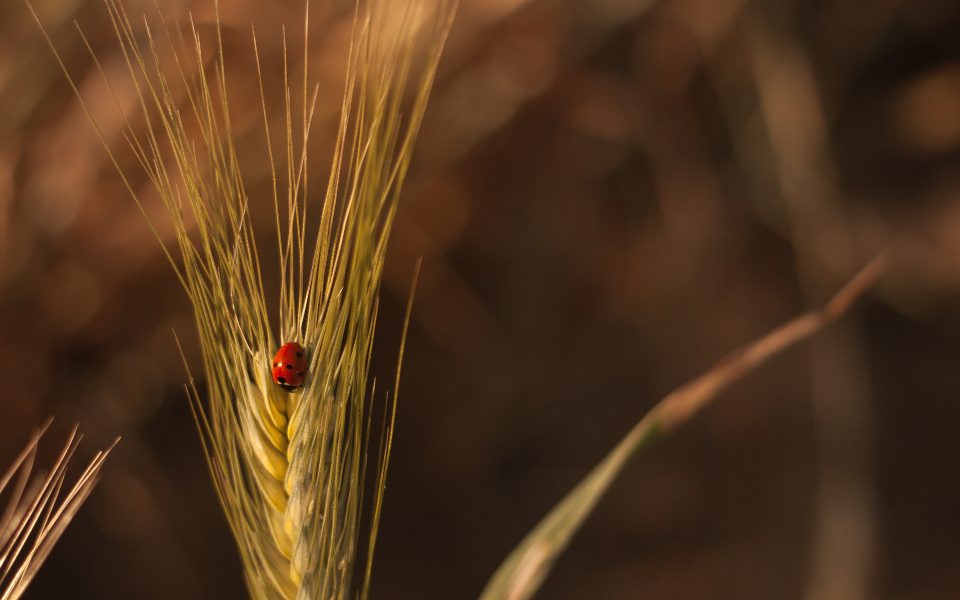Pursuing soil health precisely

Maize output on the rise in South Africa
July 24, 2018
Overview of Table Grape Season 2018
August 6, 2018
Chris and Dewald Bothma of North West have converted from conventional maize production to a combination of precision and conservation agriculture methods. But the change did not come easily, and many lessons had to be learnt along the way.
The journey to true soil health by means of precision conservation farming practices is slow and measured. But it certainly pays off, both in terms of profit and satisfaction.
This is the message from father-and-son team Chris and Dewald Bothma from Anievaal farm near Potchefstroom in North West.
Chris, an agricultural engineer by profession, began farming maize on about 1 000ha in 1995. For the next 15 years or so he used conventional farming techniques, which involved the application of nitrogen (N), phosphorus (P) and potassium (K), as recommended by fertiliser representatives.
He also changed from hybrid or non-genetically modified maize varieties to Bt or genetically modified (GM) maize when pests became a problem.
Seven years ago, however, Chris’ approach to farming did a complete about-turn, thanks to Dewald. An actuarial analyst, Dewald decided to leave the rat race and join his father on the farm, and it wasn’t long before he made his opinion known.
“He told me I was destroying the soil health! I said I understood agricultural practices, but if he could prove to me there was a better approach, we’d investigate it,” Chris says.
Dewald set about gathering as much literature on the subject as possible. Taking an agronomic angle, he proved to Chris that there were better ways to manage the soil, and that the process began with precision farming.
“At that stage, I didn’t use GPS technology. I marked chisel plough-lines with visual markers,” says Chris.
After reading more on precision soil-sampling to establish what the soil really required, and visiting farmers who were already implementing these methods, the pair were convinced that precision and conservation practices, used in tandem, could restore the soil and save on input costs.
As a result, they decided to completely change the way they farmed maize.
Conservation and precision farming
The first step to achieve precision was to implement GPS technology in all aspects of operations.
“We began taking soil samples annually, and applied lime to a third of our lands every three years with a lime spreader. The samples have helped us build a history of the farm,” explains Dewald.
“We also measured the nutrient availability annually to see what the shortages were. At that stage, we adjusted soil needs fairly inaccurately, simply adding nutrients wherever there was a shortage.”
The Bothmas also stopped using fertiliser from sources considered harmful to soil microbes, in particular replacing urea with ammonium sulphate.
Research shows that urea can release large quantities of ammonia when it breaks down Farmingin soil. High concentrations are toxic to roots and soil organisms, can cause pH changes, and destroy humus.
Ammonium sulphate does not present the same problem and is also a good source of sulphur, which is required to precipitate proteins and build soil humus.
They also sourced the best fertiliser they could afford.
Partnerships
The Bothmas have formed partnerships with companies and laboratories involved in building soil health.
Agrisol in Potchefstroom, run by agronomist GP Schoeman, has designed a system that combines soil sampling and GPS location of soil data with a phone app that enables a farmer to see what the soil status is at an exact location on a farm.
The company employs machine learning to find correlations between soil health, yields, pests and other factors.
Chris and Dewald also collaborate with the Africa Geo-Environmental Engineering and Science (AGES) Group, which uses electromagnetic equipment to study the soil’s water-holding capacity, as well as physical data such as clay layers and salt interchangeability.
The equipment is extremely accurate: it takes measurements every 10m rather than taking samples over a wide area and providing an average.
“We now have yield-potential maps for every square metre on the farm,” Chris says.
Precision farming, combined with conservation practices, requires a mindshift, he explains.
“Input and production cost have to be as low as possible, and we need to manage price by hedging as far in advance as possible. We produce for profit and not yield. We don’t need the best prices, simply above-average ones.
We have R1 500/ha less input cost than conventional farmers.
“To keep us on the farm, we don’t need the highest yields. We make the same profit with, say, 5t/ha, as conventional farmers do with 8t/ha because we save so much on input costs. For example, we can plant non-GM maize and although the yield may arguably be smaller, we get a R150/t premium for it.”
Cover crops
Three years ago, Dewald began conducting trials with cover crops, and the results promise significant savings in fertiliser costs.
Dewald’s interest in improving cover cropping began after he attended a conference by Dr Luke Baker, CEO of Brookside Laboratories in Ohio, US, who explained the Solvita Soil Health Test for traits such as soil biology, respiration and CO2.
The first step is to test virgin veld to set a benchmark for soil health. Then the carbon:nitrogen ratio (C:N) is used to determine the ideal cover crop for the land.
Yield potential maps provided by Agrisol and AGES are separated into low, medium and high yield potential zones. Samples are taken on a 2ha grid and combined to obtain accurate and conservative measures of the N, P and K expected to be available to the plants.
Fertiliser application can now be accurately based on yield potential. These tests are carried out annually.
Thus, if the test shows that 50kg of N/ ha will be available, and maize is usually planted with 100kg/N/ha, only 50kg/N/ ha will be required to top up the requirement.
The Bothmas found that over the years they had over-fertilised heavily, and some lands had 250kg/N/ ha available. This enabled them to plant the following season without applying any N.
They now fertilise only where needed, and last season alone saved a million rand on fertiliser after planting 1 400ha to maize.
Last season’s cover crop trial was the most successful to date. Dewald compared soil analyses from a maize land that had never been planted to cover crops to those from lands planted to a mixture of 11 cover crops from seed suppliers Agricol and Advance Seed.
He also chopped, dried and weighed cover crops to determine the amount of biomass produced.
Because the analyses had shown how much N, P and K the cover crops had replaced in the soil, he could calculate fertiliser savings for the coming season.
“We’re data-obsessed,” admits Dewald.
The trials still rely largely on trial and error. Only six of the 11 cover crops emerged at the same time, while other crops either did not emerge or emerged too late for land preparation prior to planting, making them unsuitable.
Dewald also discovered that if he ploughed dry matter into the soil, N would not be immediately available to the crop; by contrast, if he planted green matter, the crop could access the element immediately.
Cover crop trial results
Nitrogen: In a maize land fertilised accurately for several seasons, but never planted to cover crops, the level of total available organic and inorganic N increased 39%. By contrast, in the cover crop lands, it increased 200%.
Phosphorus: Total available P increased 15% in the maize land compared 2018with a decrease of 18% in the cover crop lands. Levels of organic available P, however, did not increase in maize lands, but increased 500% in the cover crop lands.
Potassium: Total available K increased 56% in the maize lands, while it increased 71% in the cover crop lands.
Carbon: Microbially active C increased 499% in the maize land, and 815% in the cover crop lands.
Savings
The cover crops added N at a rate of 31kg/ha to the soil, leading to considerable savings in the next season. On lands planted to cover crops, R415/ ha less N (calculated at R13,39/kg) had to be added for the coming season’s cash crop.
While total available P (inorganic and organic) declined by 7kg/ ha (implying R172/ha less P), organic P increased 5kg/ha.
Potassium increased 198kg/ ha; at R11/ kg, this was a saving of R2 178/ ha. The cover crops also added 4 800kg of biomass that could be utilised by their cattle as additional feed (this amount assumes that one-third was grazed). At R0,50/ kg, this means a R2 400 saving in cattle feed. Total savings were therefore R4 821/ha.
Using only the net value added by N and P, Dewald calculated that it would be beneficial if the cover crops were planted only every six years.
He believes, however, that a more refined cover crop ratio (legumes to grass), continual improvement via cover crops, and an integrated cattle component could make this rotation more frequent.
He hopes to plant a different part of the farm to cover crops every year, catering for the entire farm in six-year cycles, but ideally more frequently.
“Weeds flourish because of soil deficiencies. Healthy soils lead to less dominance of pathogenic nematodes. Higher organic material also means healthier plants and fewer pathogens. In addition, we haven’t had to deal with many pest infestations,” Chris says.
Sourced: farmer’s weekly



